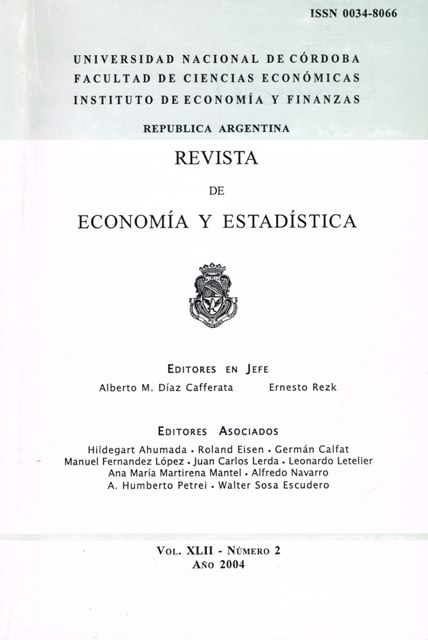The role of the States' Participation Funds - FPE in the convergence of Brazilian states' per capita income
DOI:
https://doi.org/10.55444/2451.7321.2004.v42.n2.3808Keywords:
convergence, per capita income, BrazilAbstract
The article intends to verify the existence of absolute income per capitaconvergence of Brazilian states from 1937 to 1999. Using Barro & Salai-Martin (1992)'s estimation methodology, it proceeds the analysis of ßconvergence (inverse relation between initial PIB and economic growthrate) and of convergence (decrease of variance among the PIB of states).It has been found convergence only from 1969 to 1999, the same resultfound by other authors.Afterwards, it is evaluated if there have been conditional convergence withtotal of High School student registers and if the States` Participation Fund(FPM) has contributed to decrease inequality among Brazilian states.The article uses information extracted from the National Residences SampleResearch (PNAD) of 1977, 1998 and 1999 prepared by the BrazilianInstitute of Geography and Statistics (IBGE), as well as information aboutgovernment accounts from 1985 to 2000, collected by the National TreasurySecretariat (STN).
Downloads
Downloads
Published
Issue
Section
License
Copyright (c) 2004 Ricardo Da Costa Nunes, Selene Peres Peres Nunes

This work is licensed under a Creative Commons Attribution-NonCommercial-NoDerivatives 4.0 International License.
Authors who have publications with this journal agree to the following terms:
Authors retain their copyright and grant the journal the right of first publication of their work, which is simultaneously subject to the Creative Commons Attribution-NonCommercial-NoDerivatives 4.0 International License that allows third parties to share the work provided that its author and first publication in this journal are indicated.
Authors may adopt other non-exclusive licensing arrangements for distribution of the published version of the work (e.g. depositing it in an institutional telematic archive or publishing it in a monographic volume) as long as the initial publication in this journal is indicated.
Authors are allowed and encouraged to disseminate their work via the Internet (e.g. in institutional telematic archives or on their website) before and during the submission process, which can lead to interesting exchanges and increase citations of the published work. (See The Open Access Effect)










